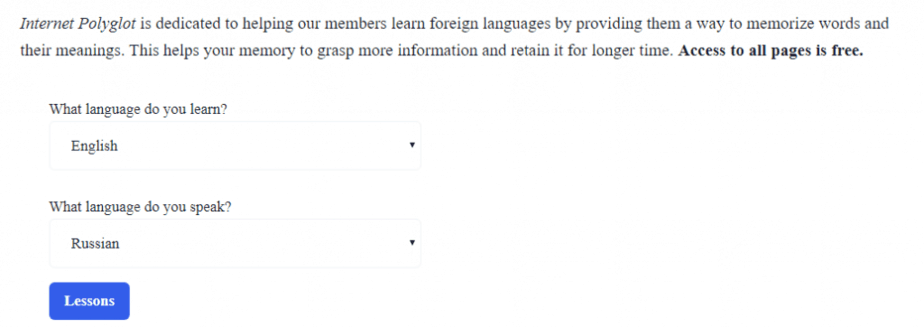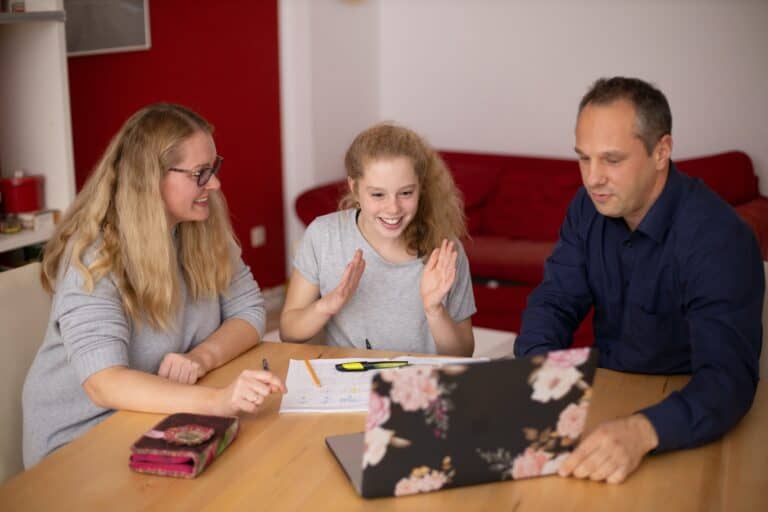How to Teach Kids a New Language at Home!
Learning a new language is invaluable. Teaching a new language when you don't yet know it yourself can be frustrating, though. These resources will help you learn a new language alongside your kiddos, partner, friends, or anyone else you want to learn with!
How to Teach a New Language at Home
Why learn a new language? You can learn languages for free, for fun, for traveling, or to amaze your friends from all over the world!

Tips for learning a new language
Learn the alphabet first. Learn the alphabet AND how to pronounce each letter first. In Spanish, for example, the vowels are a bit different than in English. Sadie learned (very) basic Spanish by listening to CDs in the car many years ago. Kevin learned in school, as a kid.
If you struggle with the alphabet, use videos to work on simple words and phrases such as colors, common nouns, and greetings.
Learn the basics next. Listen, repeat, then practice with your family. If you're learning a new language solo, or nobody is around to practice with, use flash cards. Learn colors, numbers, food words, greetings, and other basic conversational phrases to build your vocabulary quickly.
Learning high-frequency words in another language is much like how we learn sight words when we are in elementary school. Here's a list of high-frequency French words as an example. And here they are in Spanish. Make flash cards with these words, 10 at a time, until you get better and better!
Label everything. If you're learning Spanish, the refrigerator should have a label on it that says refrigerador. Label the light switches, the food, every room, and each item you can in those rooms. Say the words as you walk by, don't just look at them! 🙂
Kids LOVE doing this, and sticky notes are cheap so if they fall off of the object or wall, you're not losing a whole lot. 😉
Practice every day. Without exception, you should speak your new language several times a day. Most of us don't have the luxury of full immersion or private tutors, so in order to learn a new language at home, you've got to USE the language. If the kids aren't feeling it, now's your time to shine! Put some music on that is in the new language you're trying to learn. Even better if you can find Spanish, French, German (or whichever language you're learning) versions of English songs so you can all make the connections faster.
Use different learning methods. Some folks learn best with flash cards, while others learn better with audio books or music CDs. You can even watch movies in another language with English subtitles on! Mix it up every day so nobody gets bored, and everyone is able to retain what they're learning.
If you keep it light and fun, kids will join in sooner rather than later. Don't make it feel like “homework” or even “schoolwork”, and you will have much better results!

Duolingo
Everyone knows about Duolingo, but do you realize they have dozens of languages to choose from… all for free?! Duolingo is one of THE most comprehensive free tools for learning a new language. I often use their dictionary to translate words from English to Spanish. Download the free app to use Duolingo on the go.
Memrise
Memrise is an extremely comprehensive website for learning a new language. For example, their French I course is 8 hours long! Obviously you can break this up into 15 minute increments if you're teaching a younger child, or even for yourself. Hours and hours of learning a new language is exhausting for almost anyone.

Conjuguemos
Conjuguemos is somewhat similar to Duolingo, and is also free. It's interactive, fun, and super colorful and engaging. Conjuguemos teaches Spanish, French, German, Italian, Portuguese, Korean, and Latin. They offer games, activities, and printables that will help you and your child learn a new language in record time. You can even set up a free teacher account, which is perfect for homeschoolers!
Learn a Language
If you're interested in learning more than a language, if you want to study culture, along with words and phrases, Learn a Language is for you. I love how they teach the Spanish alphabet. I'm sure the lessons they have for other languages are just as awesome.

Internet Polyglot
Polyglot is unique because if their Quick Start Menu. Use it to choose the language you want to learn, but also which language you're learning in. If you already speak German and want to learn Spanish, Polyglot makes it easy!
Surface Languages
Surface Languages teaches useful phrases, greetings, numbers, colors and sentences for free.
Wiki Travel
Use wiki's free travel phrasebooks to learn important words and phrases in your language of choice. What makes this site is unique is the amount of languages they offer, including Hawaiian, Tahitian, Latvian, Estonian, and more. We are currently working our way through the Spanish phrasebook. They have the pronunciation key next to each phrase, which helps quite a bit.

How to learn American Sign Language
Many apps and websites cover dozens of languages, without so much as mentioning ASL. That's extremely disappointing! For that reason, ASL gets its own section. 🙂
ASL is near and dear to our hearts. Sadie's best childhood friend was deaf, and Kevin loves learning new languages and being able to communicate with everyone, so ASL is perfect for us both. Here are some amazing resources to learn Sign Language at home. The best tip we can give when learning any language, especially ASL, is to practice daily. Sign every chance you get.
Bill Vicars on YouTube is our #1 favorite resource for ASL video learning. His videos are interactive, fun, and simple. You and your child will pick ASL up fairly quickly if you spend some time watching his videos at least a few times a week.
Here are some other ASL resources:
- LifePrint – tons of helpful ASL videos
- Signing Savvy – we love their dictionary look up!
- ASL Nook – love their 50 States video!
- the ASL app – conversational ASL, over 2,000 videos
- Start ASL – we use the free version; plenty of videos, mobile friendly
- ASL Deafined – not free but only $12/year, 16,000+ ASL videos
- Signing Time – perfect for little ones, used this to teach our girls as toddlers!
While learning ASL, keep facial expressions in mind! When you see a video of someone signing and you think they're making exaggerated faces, it's actually part of the language itself. Signing without much movement, signing without facial expressions, is extremely boring! Immerse yourself in the culture and learn as much as you can, just as you would with any other language.
*Note: Huge thanks to Teaching in the Tongass and 35 Corks Art Studio for the clip art used in the ASL image above.
Other resources for learning a new language
Some of these resources didn't fit anywhere above, so here's a list of some of the other sites we really enjoy using!
- Chalk Academy: child-led learning, Chinese and Korean
- The French Experiment: I love the STORIES section!
- German for Beginners: free course
- Study Spanish: pronunciation, grammar, vocabulary, and more!
- 123 Teach Me: word of the day, phrase of the day, medical Spanish
- Spanish Games: games to practice your Spanish
- Easy Japanese: learn Japanese for free, including Kanji glyphs and more
- Arabic Keyboard: learn the Arabic language as well as history and culture
- Open Learn: many languages available, interactive, videos
How did you learn a new language? Leave us your tips in the comments below! 🙂













Try duolingo to learn languages with your children since it is an interactive program, with images and that is just what children need not to get bored learning